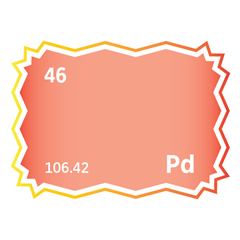Fuel Cells
Critical Minerals and The Energy Transition
Critical Minerals Powering Fuel Cells
The global shift towards cleaner, more sustainable energy solutions has placed fuel cells at the forefront of the energy transition. These advanced systems, which convert chemical energy into electricity through electrochemical reactions, offer a reliable and efficient pathway to reducing carbon emissions. However, the functionality and efficiency of fuel cells depend heavily on a range of critical minerals. Each plays a vital role, contributing to the structural integrity, catalytic processes, conductivity, and overall performance of the fuel cell. Understanding the specific roles of these minerals is essential to advancing fuel cell technology and ensuring a resilient supply chain. From catalysts that drive electrochemical reactions to materials that enhance conductivity and stability, these minerals power the next generation of energy solutions.
Key Minerals and their Roles
Catalysts
Certain minerals play a crucial role in catalysing electrochemical reactions, particularly within proton exchange membrane (PEM) fuel cells. Each catalyst contributes to enhancing reaction efficiency, durability, and overall performance.
-
Nickel serves as a catalyst in certain types of fuel cells, such as SOFCs, and is also employed in conductive layers and electrodes. Additionally, nickel is used to coat bipolar plates, contribute to the composition of stainless steel, and function as an anode material.
-
Platinum is the primary catalyst in these fuel cells, facilitating both the hydrogen oxidation reaction at the anode and the oxygen reduction reaction at the cathode. It offers exceptional catalytic activity and stability, making it the most effective electrocatalyst for both electrodes.
-
Palladium is sometimes used as an alternative to platinum or combined with it, such as in a platinum-palladium (Pt-Pd) alloy. Palladium catalyses hydrogen reactions and is highly valued for its hydrogen absorption properties.
- Cobalt is commonly used in catalyst supports or alloys to improve durability and performance, particularly in high-temperature fuel cells. It can also serve as a cost-effective alternative to platinum in PEM fuel cells, offering a balance between performance and economic viability.
Conductive materials
Copper is widely used in electrical components and connectors due to its excellent electrical conductivity. It is also utilised in alloys with nickel for anode catalysts in solid oxide fuel cells (SOFCs), as well as in wires and other conductive parts.
Structural and support materials
Structural and support materials are fundamental to the performance, durability, and efficiency of fuel cells. Elements such as aluminium, titanium, and carbon each play distinct roles in enhancing structural integrity, managing thermal conditions, and ensuring effective conductivity within the fuel cell system.
-
Aluminium is prized for its lightweight nature and is widely used in structural components and frames. Its inherent corrosion resistance enhances the longevity and efficiency of fuel cells. Additionally, aluminium is utilised for thermal management within the fuel cell stack and as a base plate material, helping to regulate heat and maintain structural stability.
-
Titanium is employed in the construction of metallic bipolar plates and other components that demand high strength and corrosion resistance. It is also used as part of the anode composition in solid oxide fuel cells (SOFCs), contributing to durability and performance in high-temperature environments.
-
Carbon is used in the form of carbon paper or carbon cloth as the gas diffusion layer (GDL), enabling efficient gas flow and electron conduction within the fuel cell. Furthermore, graphite, a form of carbon, is a leading material for constructing bipolar plates due to its excellent electrical conductivity and corrosion resistance.
Performance enhancers and additives
Though used in smaller quantities, performance enhancers and additives play a crucial role in improving the efficiency and durability of fuel cells.
-
Strontium is commonly used as a dopant in SOFCs to enhance the conductivity of ceramic materials. It also contributes to the composition of the anode, often in combination with titanium, helping to improve the overall performance and stability of SOFCs under high-temperature conditions.


Critical sectors using strategic minerals


Meet the Critical Minerals team
Trusted advice from a dedicated team of experts.

Henk de Hoop
Chief Executive Officer

Beresford Clarke
Managing Director: Technical & Research

Jamie Underwood
Principal Consultant

Ismet Soyocak
ESG & Critical Minerals Lead

Rj Coetzee
Senior Market Analyst: Battery Materials and Technologies

How can we help you?
SFA (Oxford) provides bespoke, independent intelligence on the strategic metal markets, specifically tailored to your needs. To find out more about what we can offer you, please contact us.

























